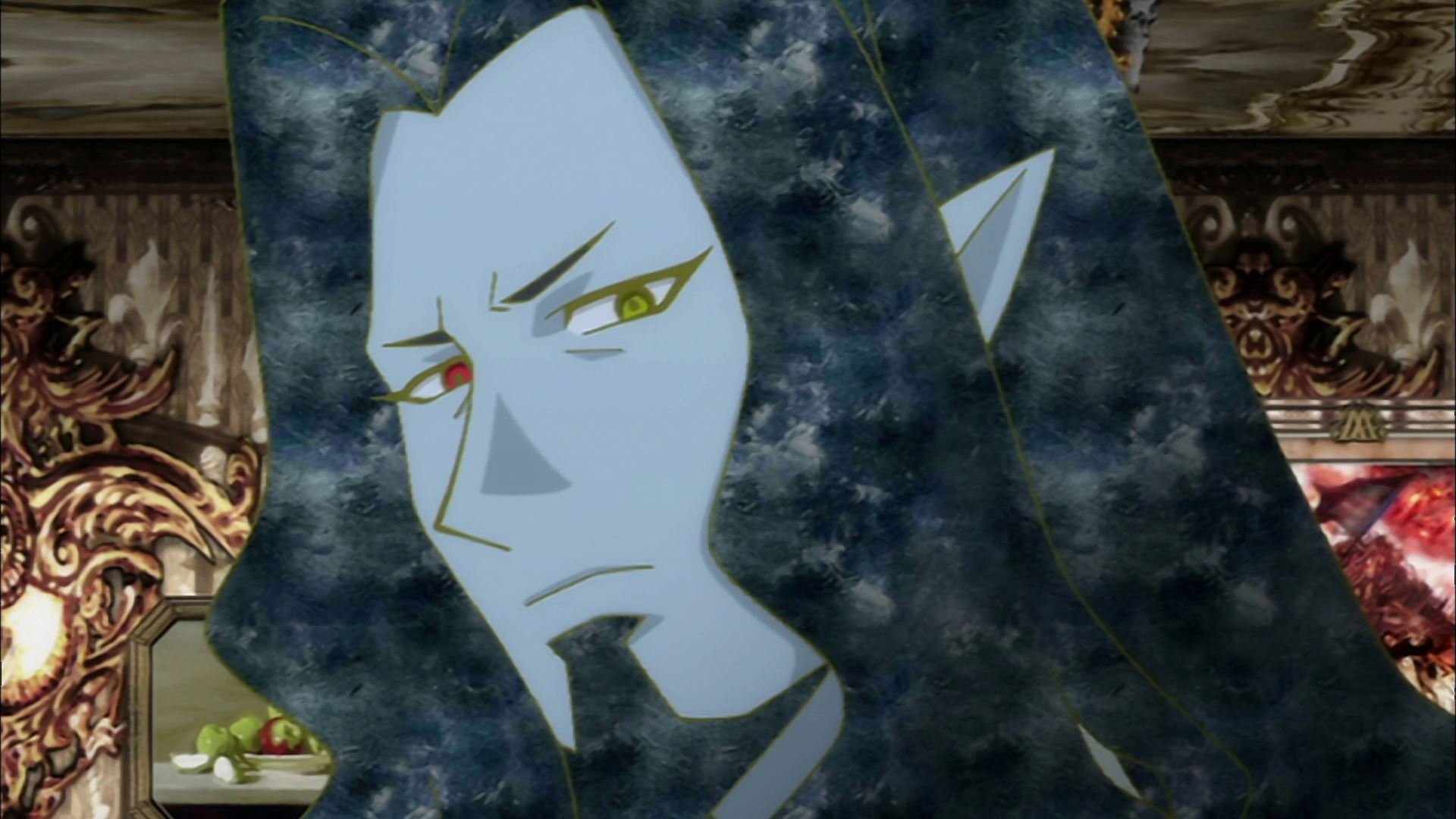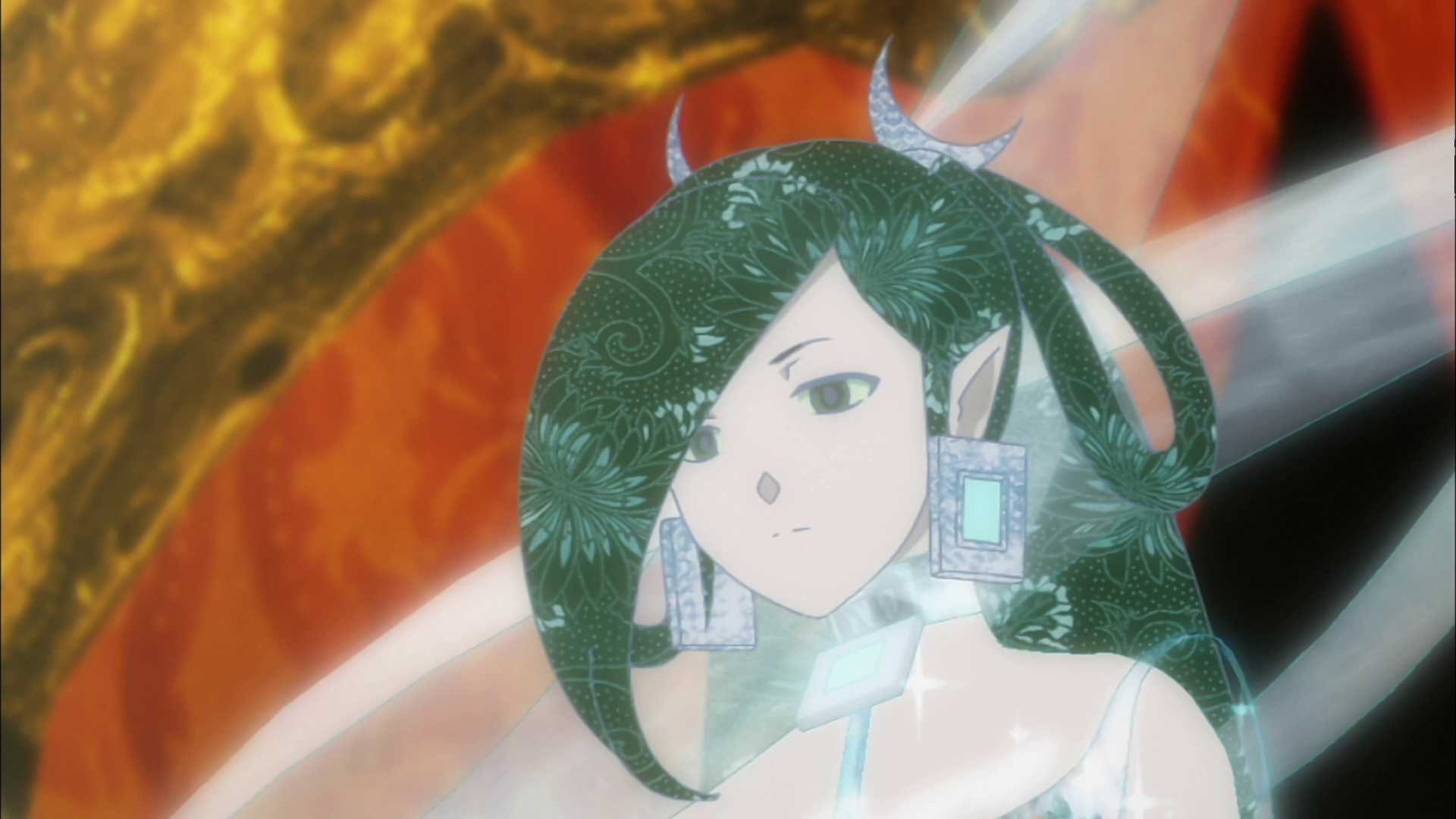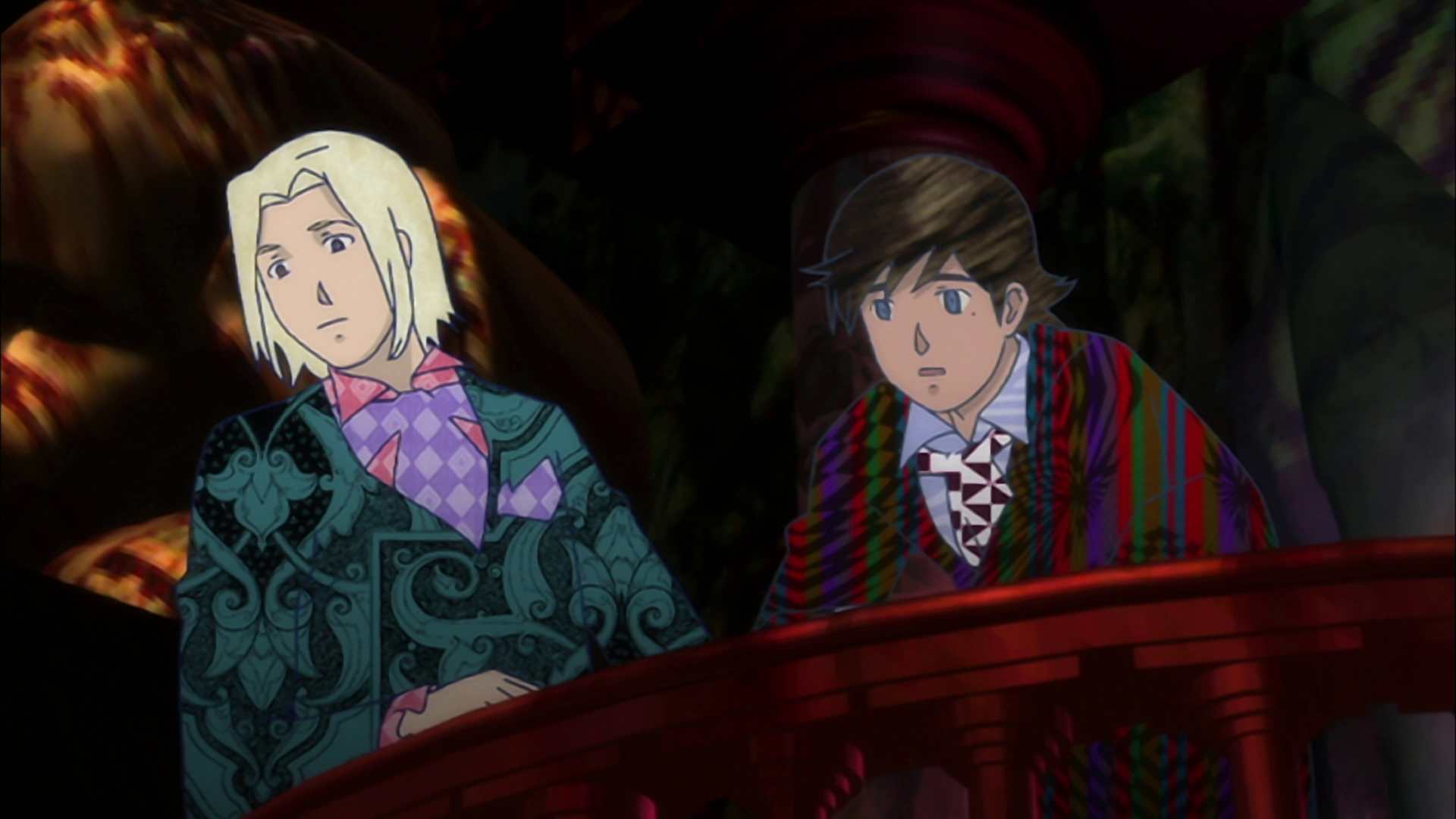Gankutsuou: The Count of Monte Cristo Review
It’s the year 5053 and young French aristocrats Vicomte Albert de Morcerf and Baron Franz d’Epinay are on a pleasure trip to Luna for the carnival. A chance encounter – or so it seems – with the mysterious and immensely wealthy Count of Monte Cristo and his exotic entourage leaves Albert intrigued and more than just a little smitten. Back in Paris, they meet the Count again who invites them and their families and friends to lavish entertainments first at his town house and then at his newly acquired mansion in the countryside. Albert’s father, General Fernand de Morcerf, is standing for president, so he’s delighted to accept but Mercédès, Albert’s mother, reacts very strangely when she meets their host. And trusting Albert is too enchanted by the Count’s alien appearance and tales of far-flung galaxies to pay much attention. He and Franz are both about to be trapped in arranged marriages and are stifling under society’s expectations; the Count seems to offer a glimpse of another, more desirable way of life far from the constraints of Earth. Albert’s fiancée is their childhood friend Eugénie de Danglars, a talented pianist, also stifling under her banker father’s restrictions while her bored mother takes lovers; Franz’s fiancée, Valentine, is deeply unhappy in the household of her father, the strict Crown Prosecutor Gérard de Villefort. However, Franz is concerned about Albert’s new obsession and begins to make discreet enquiries about the mysterious newcomer; when the name ‘Gankutsuou’ emerges, he finds it is highly classified information with some very sinister associations. Yet even Franz can have no idea of the scale of the past treachery that links the Count to Morcerf, Danglars and Villefort or how its repercussions will change all their lives.

It’s been a long wait for us in the UK (eleven years!) but at long last, thanks to Anime Limited, we have Mahiro Maeda’s award-winning Gankutsuou for R2 in Blu-ray. Gankutsuou (2004-5) is that rare creature these days, an anime TV series that is long enough (24 episodes) to develop a story and its characters and deliver a moving and satisfying experience. It’s also ravishing to look at, employing innovative animation techniques (notably the patterns on the characters’ clothes) and a rich colour palette: golds and sumptuous brocade shades for the aristocrats, contrasting with the simple washes of water colour for outdoor scenes in Marseille or Normandy. The interiors: the Paris Opera, the Count’s Champs Elysée mansion, glow with the luminous tints of stained glass. Mahiro Maeda was not only responsible for the concept and the direction, he also produced the original character designs. GONZO must have known that they had something really special here, as they pushed the boat out for this production, enabling the design team to employ innovative new techniques (and the CGI work looks pretty good for 2004).

The far-future Paris and its society evoked for this series has retained all the trappings of the nineteenth and twentieth centuries; the idle nobility drive vintage cars and motor bikes, or ride in horse-drawn carriages – whilst at the same time, spacecraft shuttle passengers to and from destinations in outer space. In this world, a nineteenth century code of honour still prevails: duels are fought between the aristocrats – even if the weapons chosen can be gigantic suits of armour and swords or, as we call them nowadays, mecha.
However, it’s not enough for a series to be strikingly beautiful in the visual department; if the story-telling doesn’t grip the viewers, then all the imaginative artwork in the world won’t be enough to succeed. Fortunately, a major contributor to Gankutsuou’s success is the intelligent script (by Natsuko Takahashi and Tomohiro Yamashita) which is respectful and ingenious in the way it reinvents the original source material (unlike, sad to say, BBC’s The Musketeers) even though it takes it far beyond the scope of the original. I think Alexandre Dumas would have been utterly delighted with this refashioning of his iconic tale of revenge, betrayal and thwarted love for a 21st century audience. If you know the original story well, you’ll take great pleasure in seeing how cleverly Maeda and his team have re-imagined it. It was an inspired idea to set the story in the far-future and to tell it from a very different viewpoint; in the original we follow poor but honest young sailor Edmond Dantès all the way through his journey from despair to self-appointed avenging angel. Here we see everything through the dazzled eyes of young Albert (which only increases the dramatic irony as the story unfolds) who is mesmerized by the Count of Monte Cristo and his mysterious alien allure, little suspecting that the Count has another much darker agenda, one that will change his view of his family and his secure world forever…

Given such a powerful story, it’s a pleasure to say that both US and original Japanese casts rise to the challenge. Overall preference probably goes to the original cast version, in which eminent seiyuu Jouji Nakata voices the Count and Jun Fukuyama plays Albert. However, the US dub is one of the best I’ve heard in a long while. Jamieson Price (here appearing as Taylor Henry) brings all his considerable talents as a VA to the Count. The real surprise (for me, at least) is Johnny Yong Bosch (appearing under the name Kevin Hatcher) in the lead role of Albert and displaying a range of emotions we rarely get to hear in his other main iconic role, Ichigo, in Bleach. Given a good script, he delivers a touching and convincing performance. However, there’s only one annoyance with the US version and that’s the French accents: ‘Auteil’ is not ‘Autuile’; ‘Villefort’ is not ‘Villefo’; the ‘s’ on the end of ‘Mesdames, Messieurs’ is silent (I could go on.) But no worries! You can watch it with the French dub on this Anime Limited version as well.

Another plus point is the use of music to enhance the drama. I’m normally not a fan of classical music being used out of context, but the main work referenced here is Tchaikovsky’s Manfred Symphony, a darkly Byronic work, which is an inspired choice; in several places the combination of the music and the animation make the hairs rise on the back of your neck. Other classical works appear in context: Eugénie’s concert debut piece is Rachmaninov’s 2nd Piano Concerto and the title song, “We Were Lovers” is based on Chopin’s E major Etude which comes, later on, to play a significant role in the story. There is also music by Jean-Jacques Burnel (The Stranglers) Koji Kasamatsu and Reiji Kitazato: an enigmatic recurring piano motif is especially poignant, contrasting tellingly with the futuristic electronic elements that remind us that the story is set in the far-distant future. The Opening and the Ending Songs “You Won’t See Me Coming” are by Jean-Jacques Burnel and are as different as they could be: the Opening sung, smokily, to piano accompaniment and the Ending cutting in (and always at a significant moment in the drama) with a searing snare drum riff.
One minor aspect that impressed me is the fact that the final episode is set five years later. This acts as a kind of epilogue, tying up loose ends, but, above all, delivering us with some kind of closure. So many fine anime series have fallen apart at the end, bundling too much information into the final brief minutes as the credits roll (Last Exile immediately comes to mind) and leaving a bewildered ‘What just happened there?’ question in the minds of the viewers. It’s a brave decision to devote a whole episode to delivering a quietly satisfying ending after the emotionally draining scenes of emotional turmoil, battle and destruction that precede it – but it feels so right in the context. I really wish that the makers of other anime series could go the extra mile and get the balance right.
The Anime Limited Collector’s edition comes in a sumptuous steelbox with a 16 page art booklet. The only extras are textless Opening and Closing Songs.
In Summary
Gankutsuou: The Count of Monte Cristo is one of those rare anime series in which the sheer beauty of the visual animated experience meshes seamlessly with a powerful and moving story and just sweeps you off your feet. One to watch again…and again.


